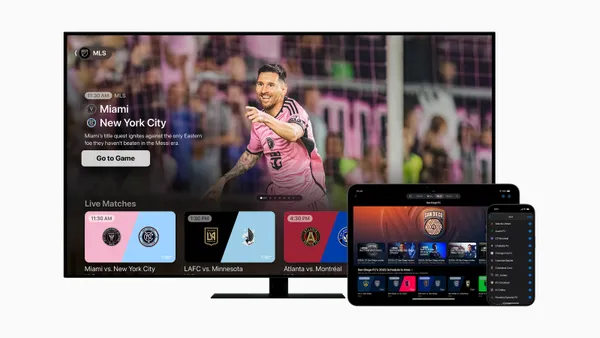Dive Brief:
- AT&T announced via news release the relaunch of its advertising and analytics business under a new name, Xandr. The company will be led by CEO Brian Lesser. Xandr will encompass existing AT&T ad and analytics businesses, including advanced TV, AdWorks, ATT.net, AppNexus and the company's data and analytics business.
- Xandr is partnering with Altice USA and Frontier Communications to aggregate and sell their national addressable TV ad inventory, as a step in creating a national TV marketplace for advertisers and premium content publishers. Xandr is also collaborating with a4, Altice USA's advanced advertising business, to expand a4's national addressable digital advertising capabilities.
- Additionally, Xandr partnered with Insight Strategy Group and Advertiser Perceptions to conduct surveys and enthnographies to understand the relationship between consumer sentiment and ad experiences. The resulting original research found 66% of consumers wish ads were more relevant to their interest and lifestyle, and 57% say ads aren't relevant. Sixty-four percent of survey respondents think advertising allows independent voices to be heard online, and 70% think ads go beyond selling products.
Dive Insight:
The launch of Xandr — which takes its name from the company's founder, Alexander Graham Bell — is AT&T's latest salvo as it attempts to compete with the ad businesses of the so-called duopoly of Facebook and Google. It follows closely on the heels of news that AT&T has withdrawn AppNexus from the Advertising ID Consortium, which brings together independent digital platforms in an effort compete against Facebook and Google. AT&T new approach as revealed in the Xandr news aims to integrate data, premium content, advanced ad technology and multichannel distribution, which is similar to the approach taken by Verizon's Oath, which has struggled to make much headway against the duopoly and recently saw CEO Tim Armstrong exit.
AT&T describes its new addressable TV offering as "a one-stop shop" for marketers that aggregates inventory from several multichannel video programming distributors, helping marketers reach their targeted audiences more cost effectively. AT&T already sells addressable ads for DirecTV, its satellite TV distributor, and has new concepts in the works for TV ad messaging, such as overlays on video screens, brand icons offering more information and interactive experiences with voice or home speaker assistants, MediaPost reports.
Addressable TV spend is expected to reach $800 million this year, according to a fall update of Magna's U.S. ad forecasts for 2018. This year, the firm predicts that 84 million homes will be reachable by nontraditional TV ad campaigns. Marketers continue to invest more in over-the-top TV, programmatic linear TV and addressable TV, attracted by the ability to target ads, cross-screen planning and buying and addressability.
Xandr's research into consumer sentiment around advertising experiences is the latest to highlight consumers' growing demands for unique brand experiences that include relevant, personalized content, but also how marketers are too often missing the mark in meeting those demands. Research from Periscope By McKinsey revealed that most consumers like receiving personalized messages, but about 40% of consumers said messages only sometimes feel personal.














